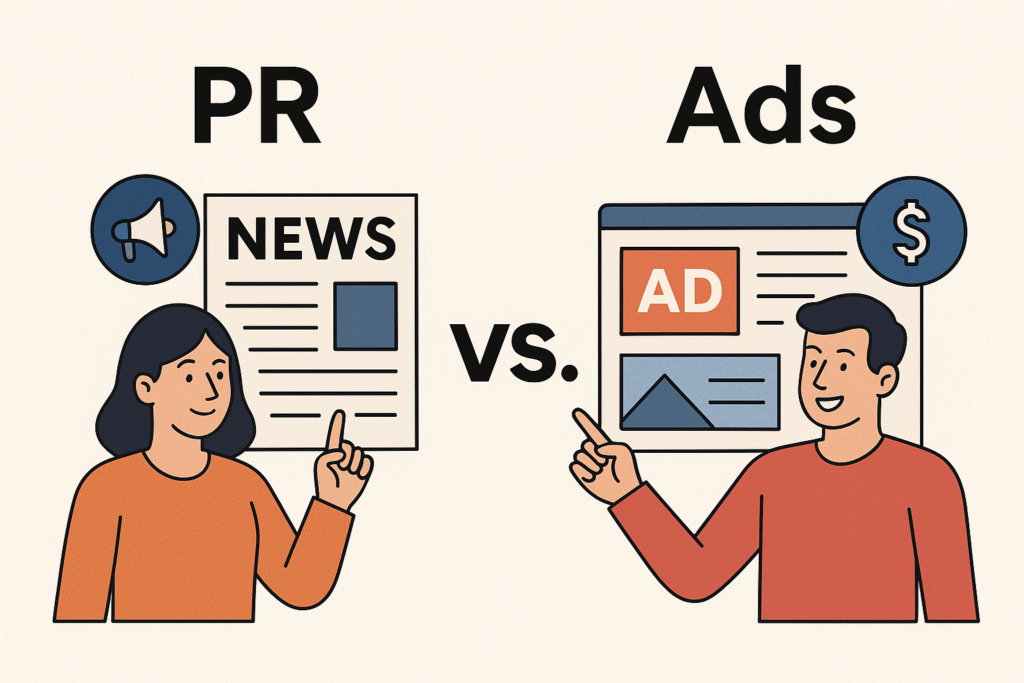
In today’s crowded digital landscape, businesses are constantly looking for ways to build visibility, credibility, and trust. But when it comes to choosing the right tools to do that, many brands still confuse Public Relations (PR) with Advertising.
While both aim to get your message out there, they operate very differently. Understanding the distinction can help you allocate your budget more effectively and craft a smarter communications strategy.
The Basics: What Is PR vs. What Is Advertising?
PR (Public Relations):
PR is about earned media. It focuses on creating a positive image of your brand through media coverage, influencer outreach, thought leadership, events, and community engagement. You don’t pay for the space your story appears in — you earn it by being newsworthy.
Advertising:
Advertising is paid media. You control the message, the visuals, and where it appears — whether it’s on a billboard, a YouTube ad, or Instagram. But you’re paying for attention.
Key Differences at a Glance
| Aspect | Public Relations (PR) | Advertising |
|---|---|---|
| Media Type | Earned media | Paid media |
| Control | Limited (journalist/editor decides the angle) | Complete control over content and design |
| Credibility | High (seen as third-party endorsement) | Lower (audience knows it’s paid for) |
| Cost | Time-intensive, retainer-based | Direct cost per placement or impression |
| Lifespan | Long-term reputation building | Short-term campaign-focused |
| Tone | Informative, educational, or story-driven | Promotional and persuasive |
| Goal | Build trust and thought leadership | Drive sales or brand awareness |
When Should You Use PR?
Use PR when you want to:
- Build long-term credibility
- Position your founders or brand as thought leaders
- Announce big news (like a funding round, launch, or partnership)
- Engage with journalists and influencers
- Manage brand reputation during a crisis
Real example:
When a startup like Focally launched its innovative smart glasses, a PR campaign helped get featured in top-tier publications like India Today, VCCircle, and NDTV. That coverage wasn’t just exposure, it was credibility currency.
When Should You Use Advertising?
Advertising works well when you want to:
- Promote time-bound offers or product launches
- Control the exact narrative and visuals
- Target specific demographics or geographies
- Retarget previous visitors or audiences
- Measure click-through rates and direct conversions
Think of it as putting a megaphone on your message: loud, controlled, and immediate.
PR and Advertising Aren’t Enemies, They’re Teammates. The best brands don’t choose between PR and advertising. They know how to blend them strategically:

- Use advertising to get immediate eyeballs on a launch.
- Use PR to shape the story and build lasting trust.
- Let PR warm up the audience. Let advertising seal the deal.
The Bottom Line
If advertising is you talking about yourself, PR is others talking about you.
One controls the message, the other earns the credibility.
And in 2025, your brand needs both
Want to Know What PR Can Do for Your Brand?
Let’s talk. Get a free PR audit today at www.digierelease.com and find out how your story can earn the spotlight.
